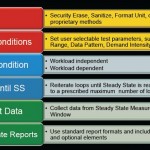Interested in M.2, the new SSD card form factor?
The SNIA Solid State Storage Initiative is partnering with SATA-IO and NVM Express to give you the latest information on M.2, the new SSD card form factor. Join us “live” on Tuesday, June 10, at 10:00 am Pacific time/1:00 pm Eastern time.
Hear from a panel of experts, including Tom Coughlin of Coughlin Associates, Jim Handy of Objective Analysis, Jon Tanguy of Micron, Jaren May of TE Connectivity, David Akerson of Intel, and Eden Kim of Calypso Systems. You will leave this webinar with an understanding of the M.2 market, M.2 cards and connection schemes, NVM Express, and M.2 performance. You’ll also be able to ask questions of the experts.
You can access this webcast via the internet. Click here, or visit http://snia.org/news_events/multimedia#webcasts
